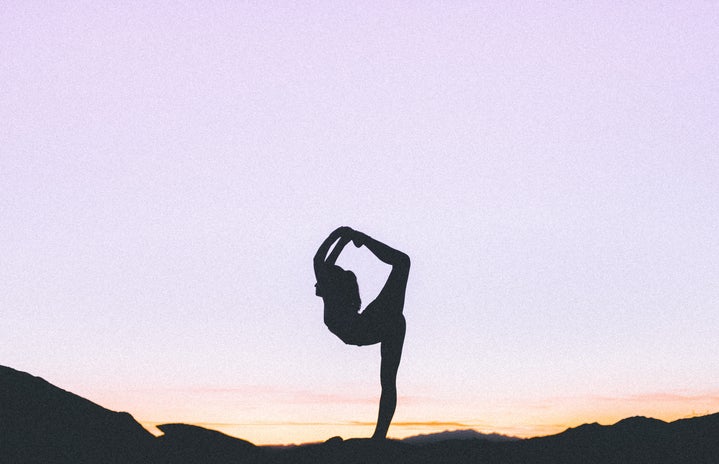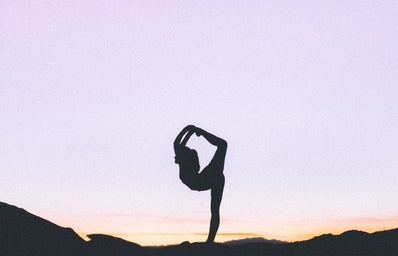The first time I tried yoga, I was fifteen. If I remember correctly, I stumbled upon it as I combed the Earth for coping mechanisms (high school was a wacky time). I found a teacher on YouTube and sporadically followed her online practices for a few months until my efforts petered out. Maybe high school was a wacky time because I didn’t utilize any coping mechanisms consistently? Who knows. Skipping ahead a few years, I tried to pick up yoga again last winter. I went to a studio this time, but again, failed to stick with the practice. The sessions were physically demanding and I felt embarrassed about my lack of ability in a class of thin, toned individuals.
Then, in the spring, the stars realigned (or maybe my brain cells realigned) and I decided to try taking yoga seriously. I purchased a package at the studio (although online yoga sessions, especially on YouTube, can be just as effective and do not involve any financial commitments) and began going three to four times a week.
How do I describe the effects of committed yoga practice without sounding overly sentimental or overly scientific? First, I will refrain from explaining the positive influences that yoga can have on your biology. There are papers detailing the health benefits of yoga, and they do a much better job of explaining than I could. Caveat: I will say that my roommate committed to yoga around the same time as me, and she saw very similar effects to her body. So my data set, at least, contains more than one person.
Now – here is my attempt at a calm subjectivity. The physical effects of yoga became obvious after a few weeks of dedicated practice. The feeling of wellness manifested itself as increased strength across the entirety of my body (my roommates saw the same effects). Since yoga tests balance and flexibility through various poses, I observed myself gaining skill and confidence in these areas. I became more adept at holding poses on one leg as I strengthened the often underused, smaller muscles involved in balance. I comfortably got my fingertips to the ground. Then there were the mental effects. Who knew that sticking with a coping mechanism could give rise to such benefits! Inconceivable! At first, I struggled to let go of unnecessary emotions on the mat– to simply act as an observer of these emotions and, instead, focus on the postures. But, as the weeks progressed, I became increasingly able to lose myself in the connection of breath to movement to whole body. I started to incorporate yogic breath into my everyday life, encouraging my belly’s slow rise and fall during moments of stress and learned to foster my own presence at the flick of a mental switch.
I know that there are so many praise-filled anecdotes out there written by yoga practitioners. I cannot help but join that conversation – it has been a healing experience for me. But I would also like to provide a more tangible form of encouragement for those interested in yoga. So – for your viewing pleasure– here is a list of tips for novice yogis that I wish I’d had sophomore year of high school:
- There is a reason that I call yoga a “practice”. You should not expect to be as skillful as individuals who have practiced for years if you have only practiced for a week. Understanding the movements takes time, but is absolutely worth the effort. In fact, one of my favorite parts of yoga is working towards a wholeness and connectedness of body. I was not born with this and would not want to be.
- Yoga is not a competition. You should not compare yourself to the individuals around you if you are practicing in a studio. If you are truly driven by a competitive spirit, then compete with your best self.
- It is so important to remain present when you are on the mat. As with meditation, fostering this presence takes time. If you feel yourself losing focus, shift your attention back to the body and glide into the movements. I’ve always found it so fascinating to observe the muscles worked by each pose – to gain a full awareness of the body and its inherent elegance. With time, you will naturally maintain this presence.
- Be kind to yourself. Yoga is not a sport – it is a method of accessing physical and mental well-being. If you fall down in a balancing pose, ground yourself (in your own time) and attempt to hold it again. Instead of casting judgement or chiding yourself, take pride in the act of practicing and setting aside time for yourself.
Om shanti shanti shanti, yogis. Peace, peace, peace.
Images courtesy of: CV Yoga

